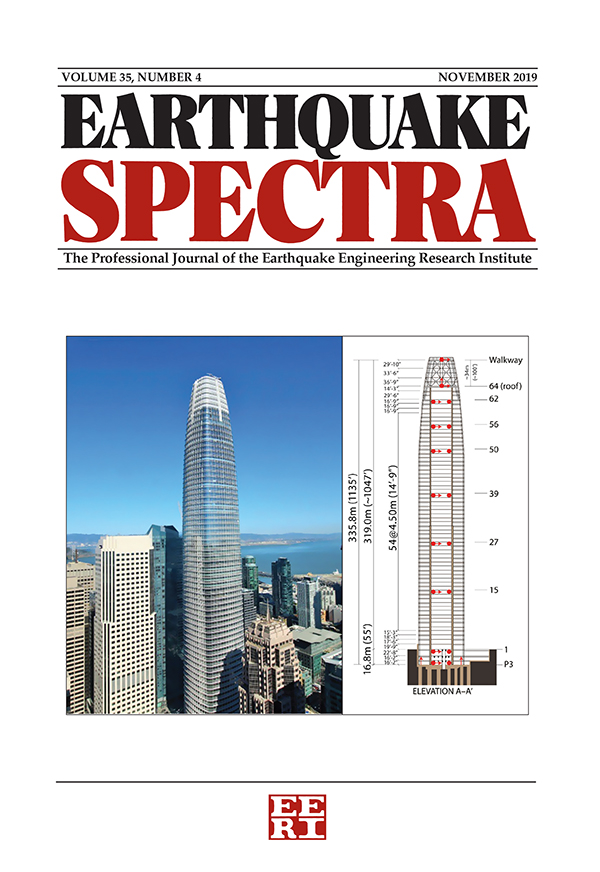Development of mechanics-based fragility curves for the Italian masonry school asset
IF 3.7
2区 工程技术
Q2 ENGINEERING, CIVIL
引用次数: 0
Abstract
This article presents the derivation of a fragility model for the Italian masonry school building asset, comprising 265 sets of fragility curves for as many building types, classified on the basis of few parameters: construction age, number of stories, plan area, and type of masonry (i.e. with regular or irregular pattern). The fragility assessment was carried out by means of parametric analyses, generating more than 7500 samples which were then analyzed through the mechanics-based procedure Vulnus. Sample fragilities were then linearly combined to obtain fragility curves consistent with the adopted taxonomy based on few parameters. A macroseismic–heuristic model from the literature was used to extend the fragility model to five damage states, according to the European Macroseismic Scale (EMS98). The proposed model was compared to empirical information in terms of observed damage on three existing schools and fragility curves recently derived by processing data of school damaged by the 2009 L’Aquila earthquake, showing a satisfactory agreement. In addition, a comparison with fragility sets for residential buildings was carried out. Both fragility models were developed with the same procedure, so as to point out differences between schools and ordinary buildings. Similar fragilities were observed for schools and residential buildings built before 1945, whereas for later periods, schools showed a higher fragility than the residential asset. Finally, seismic damage maps were developed at national scale showing the distribution of expected damage as a possible application of the derived model.为意大利砖石结构学校资产开发基于力学的脆性曲线
本文介绍了意大利砖石结构校舍资产脆性模型的推导过程,该模型由 265 组脆性曲线组成,适用于多种类型的建筑,并根据以下几个参数进行分类:建筑年代、层数、平面面积和砖石结构类型(即规则或不规则模式)。脆性评估是通过参数分析法进行的,产生了 7500 多个样本,然后通过基于力学的 Vulnus 程序进行分析。然后对样本脆性进行线性组合,以获得与所采用的基于少量参数的分类法一致的脆性曲线。根据欧洲宏观地震尺度(EMS98),使用文献中的宏观地震启发式模型将脆性模型扩展到五种破坏状态。将所提出的模型与观测到的三所现有学校受损情况的经验信息以及最近通过处理 2009 年拉奎拉地震中受损学校的数据而得出的脆性曲线进行了比较,结果显示两者的一致性令人满意。此外,还与住宅建筑的脆性曲线进行了比较。两个脆性模型的开发过程相同,以指出学校与普通建筑之间的差异。据观察,1945 年之前建造的学校和住宅楼的脆性相似,而在之后的时期,学校的脆性高于住宅楼。最后,在全国范围内绘制了地震破坏图,显示了预期破坏的分布情况,这也是衍生模型的一种可能应用。
本文章由计算机程序翻译,如有差异,请以英文原文为准。
求助全文
约1分钟内获得全文
求助全文
来源期刊

Earthquake Spectra
工程技术-工程:地质
CiteScore
8.40
自引率
12.00%
发文量
88
审稿时长
6-12 weeks
期刊介绍:
Earthquake Spectra, the professional peer-reviewed journal of the Earthquake Engineering Research Institute (EERI), serves as the publication of record for the development of earthquake engineering practice, earthquake codes and regulations, earthquake public policy, and earthquake investigation reports. The journal is published quarterly in both printed and online editions in February, May, August, and November, with additional special edition issues.
EERI established Earthquake Spectra with the purpose of improving the practice of earthquake hazards mitigation, preparedness, and recovery — serving the informational needs of the diverse professionals engaged in earthquake risk reduction: civil, geotechnical, mechanical, and structural engineers; geologists, seismologists, and other earth scientists; architects and city planners; public officials; social scientists; and researchers.
 求助内容:
求助内容: 应助结果提醒方式:
应助结果提醒方式:


